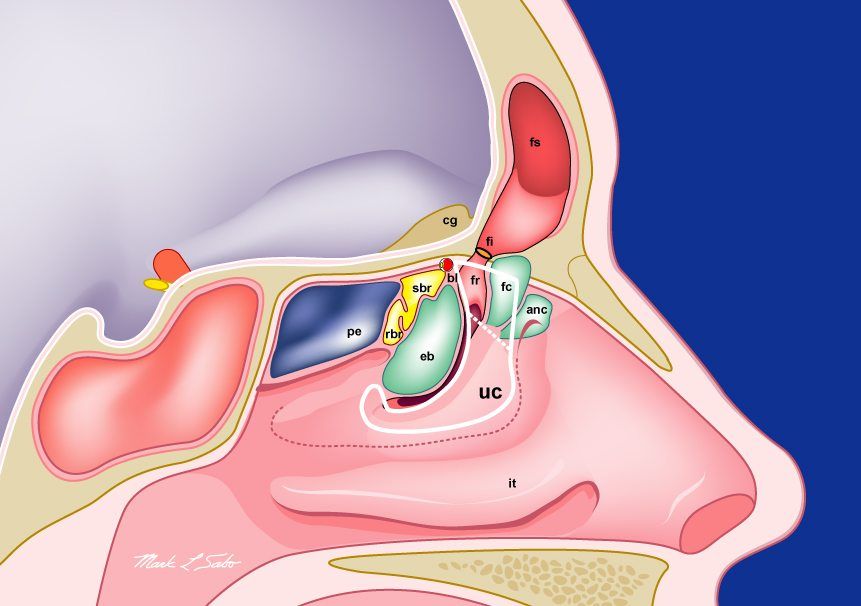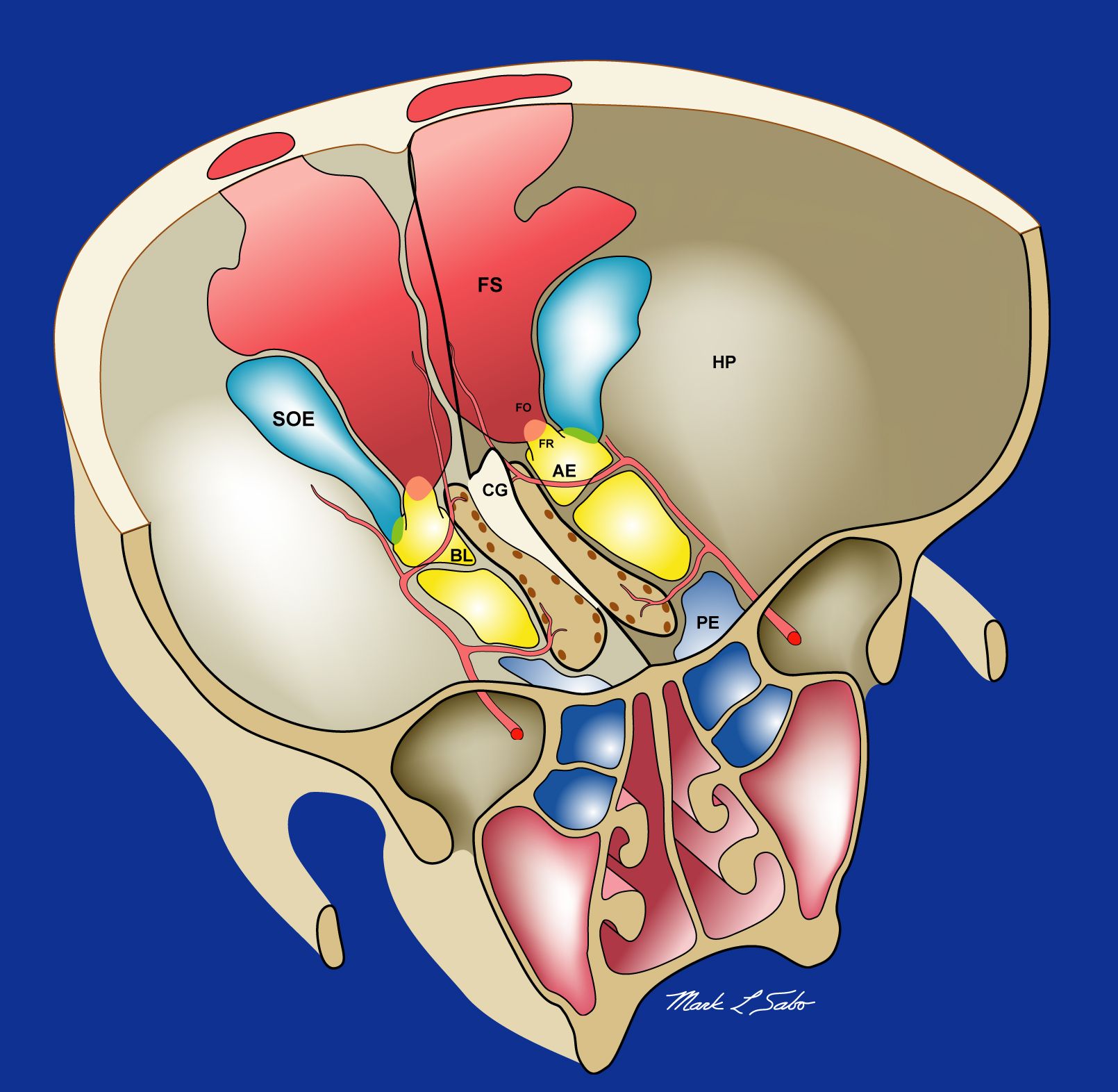Cerebro Spinal Fluid leaks
Cerebro Spinal Fluid (CSF) leaks can be broadly classified by the anatomical site in which they occur (sphenoid, ethmoid or frontal). The anatomical area of the skull base defect is extremely important because it determines the surgical approach needed for proper repair. Another aspect that can be use for classification is the etiology of the CSF leak.

Traumatic CSF leaks(Accidental OR Iatrogenic)
CSF leaks may be the result of blunt or penetrating trauma to the head. Traumatic disruption of the skull base can establish an instantaneous CSF leak or it may have a delay presentation years later with an episode of meningitis, delayed leak, or brain herniation into the nose (encephaloceles).
A potential complication of functional endoscopic sinus surgery (FESS) for sinusitis is damage to the skull base with the aftermath of a iatrogenic CSF leak. Another presentation results from sinonasal malignant tumors eroding the skull base and creating a CSF leak. Likewise, in occasions the oncological resection of sinonasal tumors requires the intentional remotion of the skull base. A Rhinologist is properly trained to manage all situations and outcomes with endoscopic repair of CSF leaks are generally over 90%.

Idiopathic Intracranial Hypertension and “Spontaneous” CSF leaks
The syndrome of idiopathic intracranial hypertension (IIH), also known as pseudotumor cerebri is a neurological disorder characterized by increased intracranial pressure in the absence of a brain tumor with normal CSF fluidity and composition. The main symptoms are headaches, pulsatile tinnitus, nausea, vomiting and visual disturbances. If untreated, it can cause inflammation of the optic nerve, which can progress to vision loss. IIH is more prevalent in obese middle age women. In these population, the sella has the radiographic appearance of an absent pituitary gland because it is fill with CSF as a result of dural herniation. This finding is known as empty sella syndrome (ESS)
The endoscopic repair success of these patients is the most unfavorable and in many cases the use of long term medication and ventriculoperitoneal shunting are needed to decrease intracranial pressure permanently.
Encephaloceles
Encephaloceles are sac-like protrusions of the brain and the membranes that cover it through openings in the skull. Every condition discussed above which may result in a CSF leak can eventually transform into an encephalocele as a consequence of constant brain pulsations. Congenital nasal encephaloceles are neural tube defects caused by abnormal closure of the cranial bones during fetal development which results in brain herniation into the nasal cavity. Although these defects are present since birth, they can be missed until the child presents with meningitis, facial deformity or more commonly with nasal obstruction.










